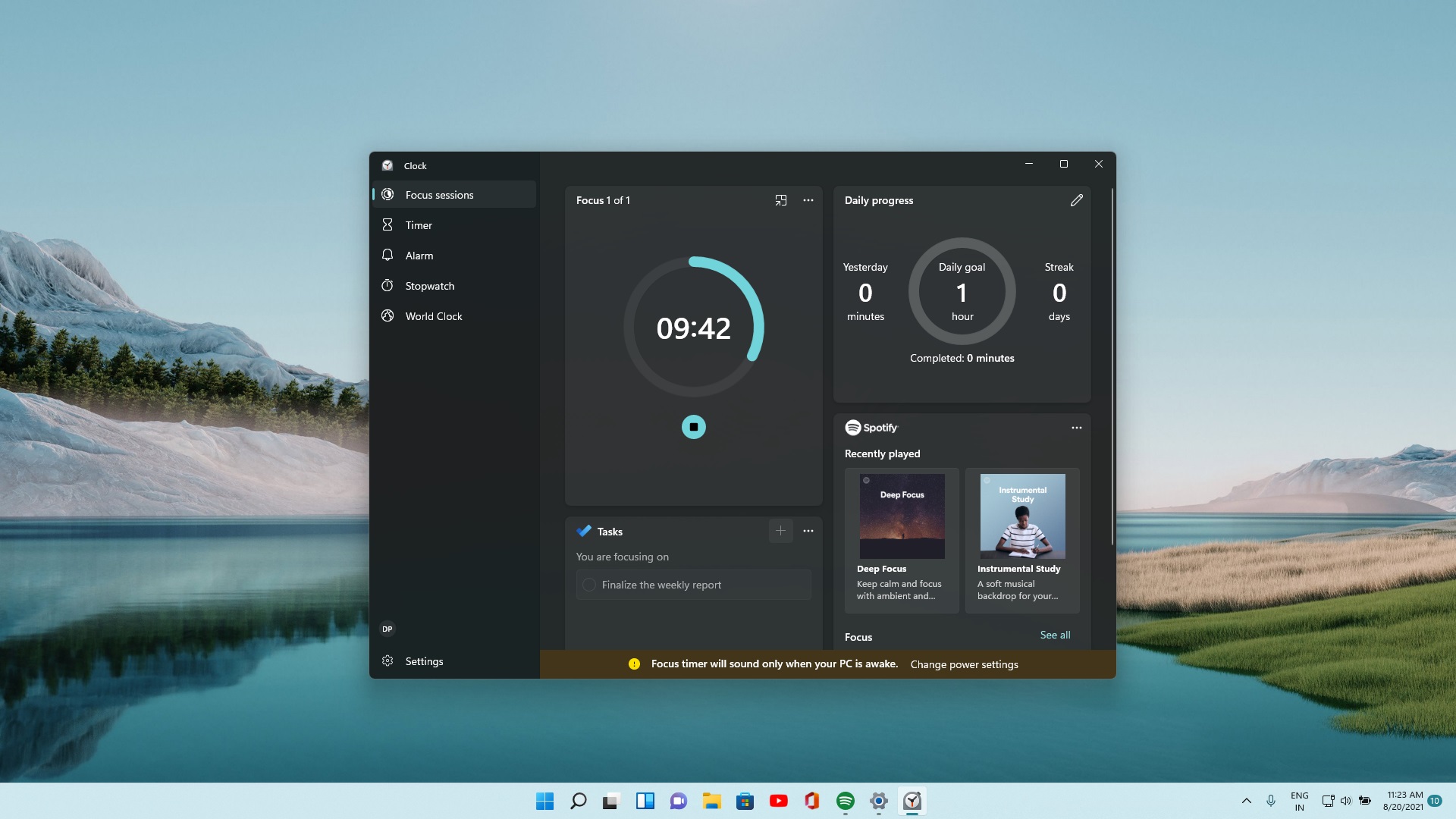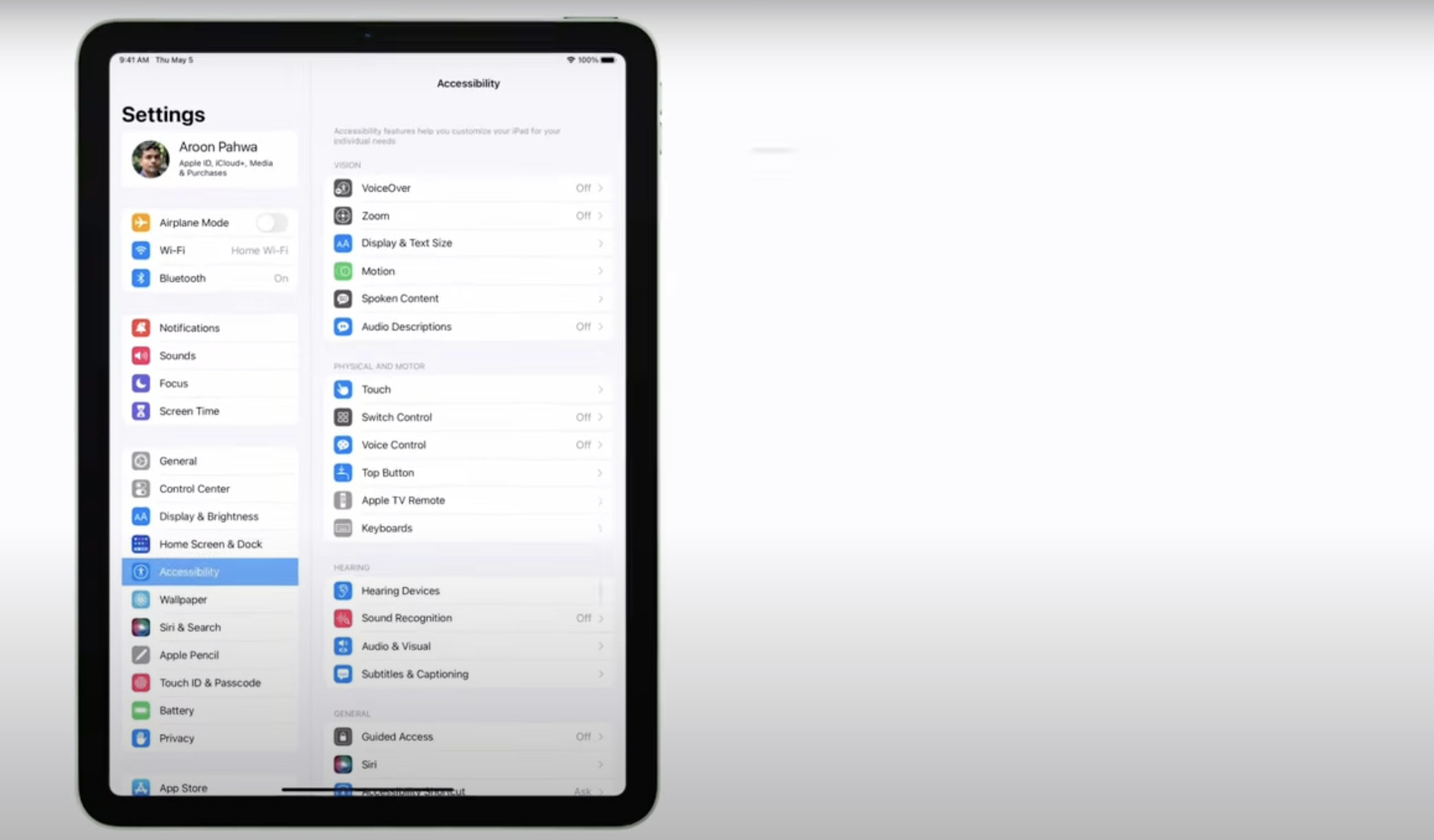Apple, Microsoft and Airbnb are part of a wave of companies that are taking into account the needs of neurodivergent users in order to design more accessible products. ‘Neurodivergence’ is a non-medical umbrella term used to describe cognitive differences such as autism, ADHD and dyslexia, which can make it harder to take in information in certain circumstances. Studies suggest this applies to around 15-20% of people, although it’s hard to be precise as these differences exist on a spectrum.
By creating features suited to this segment of the population, the result isn’t just better for those people, says accessibility specialist Alistair Duggin.
“If you include people who are neurodiverse in your research, including dyslexia and autism, things will get surfaced that will benefit this group, but also benefit everybody,” he says. “It will help you design a much more intuitive and easy-to-understand experience.”
Both ADHD and autism are linked to increased sensory sensitivity. This can mean it’s harder to filter out everyday sounds and images, and overly stimulating environments can be overwhelming and disrupt focus. Irina Rusakova is an inclusive design consultant who has consulted with autistic people to create a set of guidelines for autism-friendly product design. These include clarity, simplicity, muted colors, minimal distractions and the ability to personalize settings.
Rusakova believes there’s value in bringing autistic people into the design process in this way, because they may spot inconsistencies and friction that designers may miss. “By making these changes, companies can improve design flows for everyone,” she says.
Awareness of neurodiversity has increased dramatically in recent years, as shown by the rapid rise in the number of Google searches for the term. The launch of worldwide Neurodiversity Celebration Week in 2018, March 13th through the 18th, may have contributed to this, but social media sites like TikTok have also been influential. Videos tagged #ADHD, for example, have been viewed on the platform more than 14 billion times.

Microsoft’s Focus Sessions sets a timer to allow for uninterrupted stretches, up to an hour.
Those who design technology are taking notice, amending the way elements from input controls to information are delivered. The goal is to make a more universal design that ideally fits everyone. Just as a cutaway on a sidewalk helps those with mobility impairments, so too does it help people with grocery carts, strollers, or someone using crutches while healing from a broken leg.
These amendments can range from supermarkets introducing quiet hours to Airbnb designing a series of virtual travel options for neurodiverse customers during the pandemic. Lego launched grants in April 2022 to support play-based learning initiatives targeted at children with ADHD and autism, and in October 2022, home-appliance brand Whirlpool released instructional card decks to help neurodivergent consumers break down household tasks.
Alexis Kane is the product manager behind Focus sessions, a feature of the new Windows 11 operating system that removes distractions, launches a timer and issues reminders to take breaks. She also has ADHD, which is linked to inattentiveness and difficulty with organization, and helped inform the design.
Kane says that notifications on her computer destroyed her ability to concentrate. “I am very much not alone in these feelings, and this is why we knew we had to do something to calm down the PC and reduce distractions for users.” Focus sessions are a way of creating bursts of time when notifications and other interruptions are silenced, without having to switch them off completely and potentially miss important information.
Similarly, dyslexic people have their own specific needs to make products more accessible for them, but designing for those needs can have positive knock-on effects for other users. Microsoft’s Edge browser, for example, has a “line focus” feature, which highlights one line of text at a time. Users can also switch to “immersive reader view,” which eliminates visual clutter and allows customization of colors.
Immersive reader view was “originally designed to meet the needs of readers with dyslexia and dysgraphia,” according to Microsoft’s website. “However, anyone who wants to make reading on their device easier can benefit from this tool.” This may apply to people with low vision or a decline in cognitive functioning due to advanced age.

Guided Access silences unwanted apps, and works on the iPhone, iPad and iPod.
Noise is another distraction that those with autism and ADD find hard to tune out. Safari Reader is an Apple Macintosh feature that removes navigation bars, buttons, and ads to help direct focus to content on the web. And Guided Access, for iPhones, iPods, and iPads, can create working sessions where only one app is active at a time. A screen can even be muted to gestures and touches, to help manage attention. Apple also created entirely new background sounds to help blur noise coming from someone’s surroundings. Timed to coincide with Global Accessibility Awareness Day in 2021, the feature allows users to bury these interruptions under a steady stream of soft ambient sound.
The CEO of StoryToys, Emmet O’Neill, learned this lesson through experience. The company creates apps for children with brands like LEGO, Disney and Marvel. O’Neill says that he wasn’t as aware of what neurodiverse kids may be experiencing when he first started designing apps, and the products had a tendency to be “noisy and overstimulating,” he says Then he created a series of uncluttered apps based on The Very Hungry Caterpillar, a classic children’s book with minimalist design. At a conference, he received feedback that neurodivergent children had strongly connected with the apps.
“With one child in particular, who was non-verbal, it had led to a significant breakthrough. The child’s parents wept with joy to see this focus and connection. After that, I started to make conscious decisions about paring back and slowly releasing stimuli in apps to cater to this audience,” he says. “Those decisions were made with neurodivergent children in mind, but the customer feedback we’ve received over the years would suggest it has made great business sense too.”
The boost to O’Neill’s business likely stemmed from a design change that, while focused on a specific user, benefited others too. As Duggin points out, everyone goes through circumstances such as insomnia, a hangover, or even being on strong medication. These experiences may change how they absorb details or make sense of what they’re reading, hearing or seeing. Designing for neurodivergence means designing for these moments, too.
“There are loads of common life situations that mean we’re processing information in a different way than we are when we’re well-slept and not stressed,” he says. It’s another reason why testing products on a diverse range of users, he points out, “…will make things work for the widest possible audience.”

